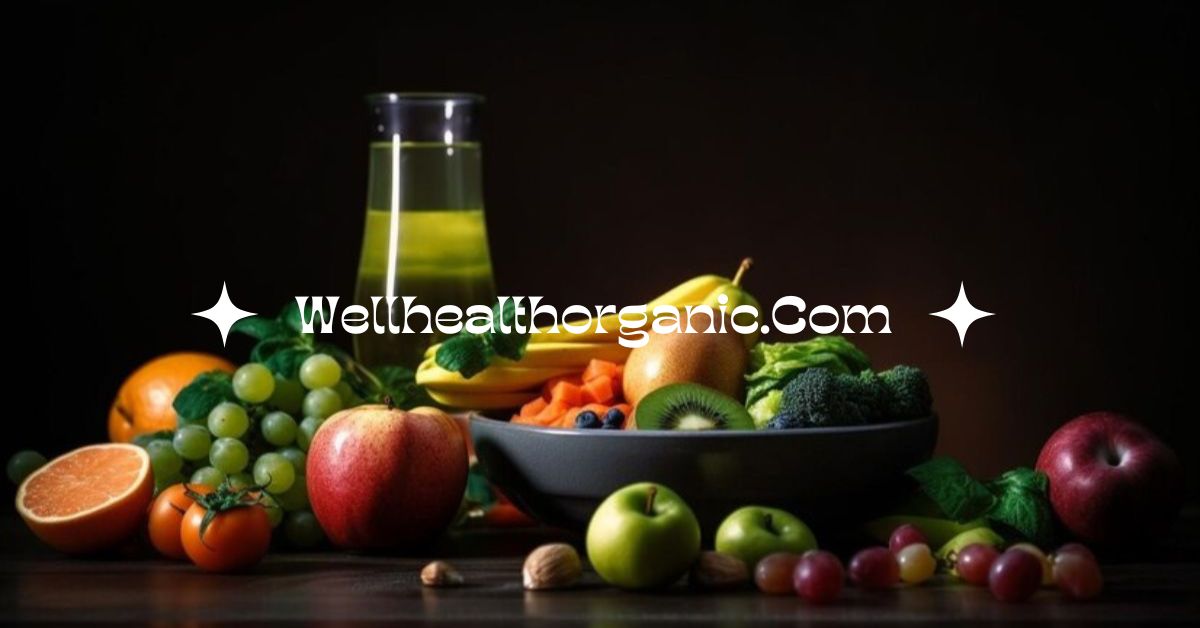Wellhealthorganic.Com: Eat Your Peels: Unlocking The Nutritional Benefits – Join the conversation!
In a world increasingly focused on healthy eating and reducing our environmental impact, a simple yet powerful shift is gaining momentum: embracing the humble fruit and vegetable peel. Often discarded as waste, these colorful cast-offs hold a treasure trove of hidden nutrients and health benefits.
wellhealthorganic.com your peels: unlocking the nutritional benefits sheds light on this exciting trend, guiding you towards a more holistic and sustainable approach to your diet.
This article delves into the surprising power of peels, exploring how these forgotten parts can transform your health and well-being. We’ll unveil the science behind their nutritional value, discover the practical ways to incorporate them into your meals and explore the environmental and economic benefits of embracing this peel-powered revolution.
A Peek into the Peel Powerhouse
Fiber:
Essential for gut health, digestion, and regulating blood sugar levels, fiber plays a starring role in peels. Apple peels, for instance, are rich in pectin, a soluble fiber that promotes healthy gut bacteria.
Vitamins and Minerals:
From the immune-boosting Vitamin C in citrus peels to the potassium-packed potato skins, peels offer a diverse range of essential micronutrients.
Antioxidants:
These powerful warriors fight free radical damage in the body, potentially reducing the risk of chronic diseases. Mango peels, with their abundance of vitamins A and C, are a prime example of antioxidant powerhouses.
The article explores the specific benefits of peels from various fruits and vegetables:

Apple Peels:
A champion for gut health, apple peels boast quercetin, an anti-inflammatory antioxidant linked to reduced chronic disease risk.
Read: Taiwan Car Rental Gharry – Explore Taiwan At Your Own Pace!
Citrus Peels:
Bursting with vitamin C and limonene, citrus peels support immunity, improve skin health, and may even possess anti-cancer properties.
Potato Peels:
Don’t peel those potatoes! Their skins are a treasure trove of potassium, iron, and fiber, aiding blood sugar control and promoting satiety.
Banana Peels:
Although not typically consumed directly, banana peels are surprisingly high in potassium, fiber, and mood-boosting tryptophan, a precursor to serotonin.
Cucumber Peels:
Rich in vitamin K for bone health and silica for vibrant skin, hair, and nails, cucumber peels offer a surprising beauty boost.
Mango Peels:
Packed with vitamins A, C, and E, along with fiber and polyphenols, mango peels are a triple threat to immunity, skin health, and protection against oxidative stress.
Unleashing the Benefits: A Guide to Peel Power in Your Diet
The article by wellhealthorganic.com your peels: unlocking the nutritional benefits goes beyond simply highlighting the benefits of peels. It empowers you to incorporate them into your diet seamlessly. Here are some key takeaways:
Wash Wisely:
Always prioritize washing fruits and vegetables thoroughly to remove any pesticides, dirt, or bacteria. A vegetable brush can be helpful for tougher skins.
Embrace Organic:
Whenever possible, choose organic produce to minimize exposure to pesticides, which can concentrate on the peel.
Get Creative in the Kitchen:

The possibilities are endless! Add apple peels to smoothies, use citrus zest in baking, or transform potato skins into crispy snacks.
Read: Isla Amelia Gates – Beyond The Shadow Of Fame, A Rising Star Emerges!
Blend it Up:
Utilize a high-powered blender or juicer to incorporate peels into your drinks. This is a fantastic way to mask their texture for those new to the peel power movement.
Dehydrate and Powder:
For a concentrated nutrient boost, dry citrus peels and grind them into a powder to sprinkle over salads, yogurt, or oatmeal.
Cooking and Baking Magic:
Embrace peels in your cooking and baking! Roast potato skins for a delightful snack, or add citrus peels to marinades and sauces for a burst of flavor.
Peel-Based Teas:
Embrace the fragrant and flavorful world of peel-based teas. Simply steep citrus peels in hot water for a refreshing and healthy beverage.
Addressing Concerns and Embracing Sustainability
While the benefits of peels are undeniable, the article acknowledges some potential concerns:
Pesticide Residue:
Opting for organic produce and washing thoroughly helps mitigate this risk.
Bitter Taste:
Start with small amounts of peels, particularly those of citrus fruits, and gradually increase your intake as your taste buds adjust.
Digestive Sensitivity:
If you have a sensitive digestive system, introduce peels slowly to avoid discomfort. Some individuals may experience gas or bloating initially.
Allergies:
Be aware of any possible allergies. While rare, some individuals may have allergic reactions to specific fruit or vegetable skins.
Beyond the Plate: The Environmental and Economic Benefits of Peel Power

The embrace of peels extends far beyond individual health benefits. wellhealthorganic.com your peels: unlocking the nutritional benefits highlights the positive environmental and economic impacts of this simple shift:
Reducing Food Waste:
In a world grappling with food insecurity, utilizing the entire fruit or vegetable significantly reduces food waste. This translates to a more sustainable food system and less pressure on our already strained resources.
Cost-Effectiveness:
By using the whole fruit, you get more nutritional bang for your buck. Peels are packed with nutrients, so you’re essentially maximizing the value of your grocery purchases.
Sustainable Practices:
Embracing peels signifies a commitment to mindful consumption and reducing your environmental footprint. It’s a small yet impactful step towards a more sustainable future of food.
Read: Alya AI – Get AI Advantage!
FAQs:
1. Can peels actually be better for you than the fruit itself?
In some cases, peels can be just as nutritious, or even more so, than the flesh of the fruit or vegetable. For instance, apple peels boast a higher concentration of certain antioxidants compared to apple flesh.
2. What’s the most surprising benefit of eating peels?
Some peels, like mango peels, are surprisingly rich in vitamin A, exceeding the amount found in the flesh itself!
3. I don’t like the taste of peels. Any suggestions?
Start small! Blend peels into smoothies or grate citrus zest for a subtle flavor boost. Roasting or sauteing peels can also mellow their bitterness.
4. Are there any downsides to eating peels?
Pesticide residue is a concern. Choose organic or wash thoroughly. Some peels can cause digestive discomfort, so introduce them gradually.
5. Can I compost peels instead of eating them?
Absolutely! Peels are a fantastic addition to your compost bin. They contribute valuable nutrients and organic matter that helps break down into nutrient-rich compost for your garden. Composting peels is a great way to reduce food waste and create a valuable soil amendment, even if you don’t plan on eating them directly.
6. Are there any health benefits to using peels topically?
While research on topical applications of peels is ongoing, some anecdotal evidence suggests potential benefits. For instance, banana peels may help soothe itchy bug bites due to their anti-inflammatory properties. However, more scientific studies are needed to confirm these claims.
Conclusion:
The humble fruit and vegetable peel has emerged as a surprising powerhouse in the world of health and sustainability. Packed with essential nutrients, fiber, and antioxidants, peels offer a wealth of benefits that extend far beyond the flesh they protect.
From boosting your gut health and immunity to reducing food waste and saving money, embracing peels is a simple yet impactful way to transform your diet and contribute to a brighter future.
Read more:
- Atrasolan: A Rising Star Across Industries – Unveiling Its Potential And Promise
- Navigate The Ever-Evolving Landscape Of Wellness With Trendzguruji.Me Health – Your Trusted Guide To A Healthier You
- Mgj Doppy Tlae – Elevate Your Writing With Mgj!
- Myflexbot: Automating The Hustle – A Comprehensive Look For Amazon Flex Drivers






